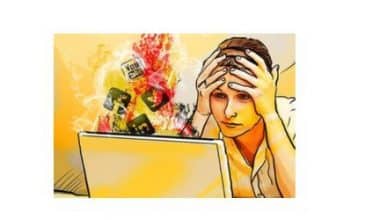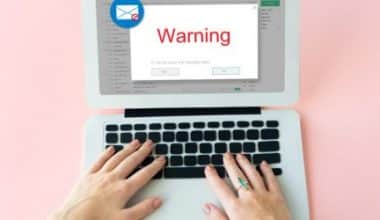Have you ever been caught off guard by a product recall? I remember the first time I heard about one; it was a brand I trusted, and I was shocked. Suddenly, I wondered how businesses protect themselves from the fallout of such incidents. That’s when I discovered the role of product recall coverage and product recall insurance in keeping companies afloat during these crises. It’s not just about the cost of recalling the products but also the reputation damage, customer trust, and potential legal implications.
But here’s where it gets interesting: how exactly does this insurance work, and is it something every business should have? If you’re as curious as I was, this guide is definitely for you.
Key Point
- Product Recall Coverage helps businesses manage the financial impact of recalling defective or unsafe products, covering costs such as customer notifications, product replacement, and legal fees.
- Companies should address product recalls openly, explaining the issue to customers and detailing the actions to ensure safety and resolve the problem.
- With increased government oversight and stricter safety standards, the likelihood of recalls has grown, making product recall insurance essential for businesses to protect themselves from significant financial losses.
- Brands should provide clear instructions for returning or replacing products, communicate frequently with customers, and implement feedback to improve processes and prevent future issues.
- After a recall, businesses can rebuild trust by taking accountability, making necessary improvements, and showing commitment to safety and customer satisfaction, turning a crisis into an opportunity for growth.
What Is a Product Recall?

Credit: Freepik
A product recall is when a company retrieves defective or potentially dangerous products from consumers and offers compensation, such as a replacement, repair, or refund. Recalls are typically triggered by concerns over safety, usually when a manufacturing defect is discovered that could pose a risk to users.
Recalls can either be voluntary, where the company decides to recall the product on its own to prevent harm, or they can be enforced by a regulatory authority, such as the Consumer Product Safety Commission (CPSC) in the U.S. In cases where a recall is mandated, the company is legally required to take action to protect consumers from the risks posed by the product.
What is Product Recall Coverage
Product recall coverage is insurance that helps protect businesses from the financial losses associated with recalling defective or unsafe products. When a company issues a product recall due to safety concerns, design flaws, or labeling errors, this coverage can help cover the costs of the recall process.
These costs might include notifying customers, shipping and transportation for returned items, repairing or replacing the product, and any legal fees or settlements that may arise from customer claims. Product recall coverage minimizes the financial impact on a company while ensuring consumer safety.
Understanding Product Recall Coverage Insurance
Product recall insurance provides financial protection to companies by reimbursing them for the losses they incur when a product is recalled. Recalls can either be involuntary, where regulatory agencies or the government mandate them, or voluntary, when the manufacturer identifies a defect that might not yet require a formal recall but could still pose potential risks. Regardless of the type, recalls are often expensive.
For example, in the case of a food and beverage company, the policy coverage is activated when it becomes clear that a product, either accidentally or maliciously contaminated, poses a threat of causing serious harm or even death to consumers. Even if no legal liability is determined, the insurance can still cover the costs of handling the recall.
Smaller companies are especially vulnerable to financial ruin without product recall insurance, as they may not have the resources to absorb the significant costs involved in the recall process. Larger companies might be able to manage the financial impact, but smaller businesses could face bankruptcy without this coverage.
While beneficial for consumers, the growing demand for stricter product quality standards adds pressure on manufacturers. The challenge is even more pronounced in today’s globalized economy, where supply chains span different countries, and manufacturing standards can vary greatly from one location to another.
As global regulatory requirements and new product safety rules continue to expand, the risk of product recalls has increased significantly, making product recall insurance an essential safeguard for many companies.
Reasons to Purchase Product Recall Insurance
Here are three key reasons why businesses should strongly consider purchasing product recall insurance:
#1. High Frequency of Recalls
Product recalls are incredibly common, with incidents happening almost daily. Hardly a day goes by without a company recalling goods due to safety issues or risks of illness. In fact, the Food and Drug Administration (FDA) reported nearly 5,000 product recalls during the 2023 fiscal year alone.
Most of these recalls involved devices, while food and cosmetics comprised the second-largest category. Given the prevalence of such events, having insurance to mitigate the financial fallout of a recall is increasingly essential for businesses.
#2. Increased Government Oversight
Regulatory scrutiny is more intense than ever, with governments enforcing stricter product safety standards. For example, the U.S. government has strengthened its oversight through laws like the Consumer Product Safety Improvement Act (CPSIA) of 2008, which introduced new regulatory and enforcement mechanisms, particularly for toys and infant products.
Similarly, the Food Safety Modernization Act (FSMA) of 2011 set more rigorous guidelines and monitoring practices to reduce the risk of foodborne illnesses. With this heightened oversight, the chances of facing a mandatory recall have increased, making insurance protection vital to ensure companies can comply without facing devastating financial losses.
#3. Significant Recall Costs
The financial burden of a product recall can be overwhelming. Once a recall is initiated, costs start piling up quickly, beginning with removing products from store shelves and halting shipments in transit. Companies then often face expenses related to the destruction or safe disposal of recalled products, followed by the need to replace them with new inventory.
These costs can escalate rapidly, from logistics to communication with affected consumers, making product recall insurance a critical safety net to help businesses manage a recall event’s potentially prohibitive financial toll.
In today’s market, with frequent product recalls and regulations becoming increasingly stringent, having product recall insurance can be the difference between survival and financial ruin for many companies.
How Brands Can Effectively Respond to Product Recalls
Handling a product recall effectively is crucial for maintaining customer trust and brand reputation. Here’s how brands can respond:

#1. Acknowledge the Problem
The first step in managing a product recall is promptly recognizing and communicating the issue transparently with your customers. Trying to conceal or downplay the problem can severely damage your brand’s credibility and trustworthiness. Instead, be upfront, honest, and empathetic in your messaging.
Clearly explain the cause of the recall, the potential risks to customers, and your actions to resolve the situation. Offering a sincere apology and genuine concern for your customers’ well-being will show that your brand values customer safety above all.
When addressing the issue, it’s important to share how and when it was identified and emphasize your commitment to correcting it. Acknowledging your responsibility and taking accountability will reassure customers that the brand is taking swift action to prevent future occurrences.
#2. Provide Clear Instructions
Once the recall is announced, brands must provide simple and precise instructions for customers to return, exchange, or safely dispose of the affected product. Make this process as easy as possible to minimize inconvenience. For example, you can offer prepaid shipping labels, arrange free pick-up services, or set up dedicated return points.
Ensure customers know exactly which products are affected by providing clear product identifiers, such as batch numbers, descriptions, or images. Offering refunds, replacements, or discounts on future purchases can also help retain customer loyalty during the recall. Direct customers to your website, customer service hotline, or social media channels for further guidance and support, ensuring they can easily find the help they need.
#3. Communicate Frequently and Consistently
Ongoing communication is key during a product recall. Keep your customers informed throughout the entire process, from the initial recall announcement to its resolution. Update them regularly on what actions are being taken, the progress of the recall, and any preventive measures being implemented to avoid similar issues in the future.
Use multiple communication channels like email, SMS, social media, and press releases to reach your audience and address their questions or concerns. Being proactive in your outreach will help alleviate customer anxiety and demonstrate that your brand is fully engaged in resolving the issue. Maintaining open lines of communication helps foster transparency and rebuild trust.
#4. Learn from Feedback
A product recall provides an opportunity for brands to learn and improve. Actively seek feedback from customers, employees, suppliers, and regulatory bodies to better understand the root cause of the problem. Conduct surveys, interviews, or focus groups to gather insights and monitor online reviews, social media sentiment, and media coverage for additional context.
#5. Rebuild Trust
The final and most important step after a recall is to rebuild customer trust and loyalty. Show accountability by taking full responsibility for the issue and demonstrating your commitment to fixing it. Highlight the changes or improvements you’ve made to ensure customer safety moving forward.
You can also strengthen your brand’s relationship with customers by showcasing your dedication to positive causes that align with your values, whether it’s sustainability efforts or community support initiatives. Additionally, re-engage your audience with new campaigns, product offerings, or events that emphasize your brand’s unique strengths.
A well-prepared business can efficiently manage product recalls, minimizing the financial, legal, and reputational risks. Use this comprehensive Product Recall Preparedness Checklist to ensure your company is ready to handle a product recall if the situation arises:
Examples of Product Recalls

Credit: Freepik
Recalls can happen in any industry for various reasons. Here are just a few notable examples:
#1. Airbags
In recent years, tens of millions of cars were recalled due to faulty airbags made by Takata. The issue? According to the National Highway Traffic Safety Administration (NHTSA), prolonged exposure to high heat and humidity can cause these airbags to explode during deployment, injuring passengers. Because not all replacement parts were available right away, the recall had to be done in phases, with priority given to vehicles at higher risk.
#2. Peanut Butter
In 2009, a massive salmonella outbreak was traced to peanut butter products from Peanut Corp. of America. This outbreak led to several deaths and hundreds of people getting sick. Thousands of potentially contaminated peanut butter products had to be pulled off the shelves. The result? Peanut Corp. went out of business, and the peanut industry hit significantly.
#3. Toys
In the mid-2000s, millions of children’s toys from brands like Mattel and Fisher-Price were recalled because their paint contained unsafe levels of lead. Most of these toys were manufactured in low-cost Chinese factories, which raised concerns about production standards.
Top 10 Tips to Avoid a Costly Product Recall
Here are ways to avoid costly product recall:
#1. Get Cozy with Your Marketing and PR Team
Your Marketing and PR folks need to know what goes into making your products, how they’re made, where things could go wrong, and which distributors might be affected. This will help them whip up crisis plans and figure out how to react when things go south.
#2. Keep an Eye on Your Ingredients and Components
Regularly audit your suppliers. Are they following the rules? Is every batch traceable? If something goes wrong on their end, will it throw your whole operation into chaos? Knowing this in advance is key to staying ahead of potential disasters.
#3. Track Your Machinery’s Maintenance
Ensure every piece of machinery has an up-to-date maintenance record. In industries like food and beverage, recalls are often linked to contamination from machine parts. Make sure your storage and transport systems are also in top shape.
#4. Stay Current with Policies and Procedures
Are your processes being followed to the letter? Do your employees know what they’re doing? Run spot checks and verify that everyone is confident in their role. Keep track of all training and check-ups to show you’re on top of things. Mistakes can happen, but you must prove you’ve done everything to prevent them.
#5. Push for Continuous Improvement
Safety and quality should always come before meeting production targets. Boosting output without compromising quality is the real goal. Spread this message across all departments, not just to the quality control folks.
#6. Prepare a Recall Plan
If a recall happens, who do you contact first? What’s your plan of action? Walk through this with your key people, including PR and distributors, so everyone knows what to do. A solid recall plan can save you from a lot of headaches and costs.
#7. Double-Check Your Insurance
Make sure your insurance covers everything. A recall can be expensive. You might need to halt production, shut down your plant, or even launch a PR campaign to win back trust. Better to be prepared than blindsided.
#8. Consider Digital Tools
Think about adopting digital tech like a Quality Management System (QMS). This can help you catch problems early, reduce the scope of recalls, and take control if something goes wrong. Having real-time data makes everything smoother and gives you peace of mind.
#9. Integrate Quality with Operations
Quality control shouldn’t be a separate thing. If quality is built into your operations, you’ll catch issues in real-time and avoid wasting whole batches. Bringing QC and operations together means you’re not just spotting problems you’re preventing them.
#10. Empower Your Production Team
Make sure your team knows the standards they need to hit and what to do if things aren’t up to par. Give them real-time feedback so they can fix issues before they escalate. Everyone wins when employees know what’s expected and have the tools to act.
Related post
Product Launch Mastery: How to Create Buzz for Your Upcoming Product Launch
Media Coverage: Your Blueprint to Captivating Audiences and Making Headlines
Top 10 Most Reliable Car Brands in 2024 for Nigerians






